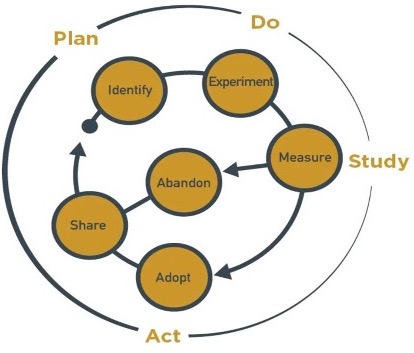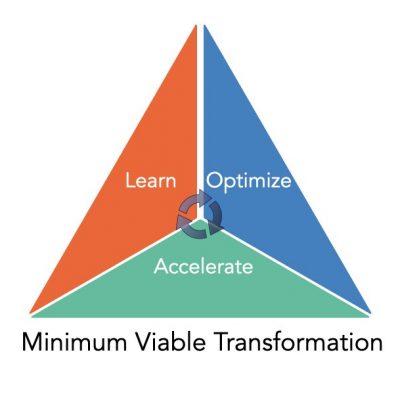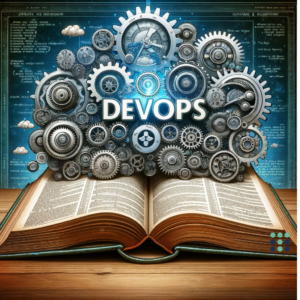Is there a dark side to agility?

"The dark side of the Force is a pathway to many abilities some consider unnatural"
Emperor Palpitine Tweet
When anyone tries to sell a tool, a prescribed method, “one size fits all,” or that they say is “immutable,” these can be red flags that whatever they are “selling” is probably not going to be the right fit for you. The approach many Agile “purists” will expound on is that you must do things a certain way, or if that way of working does not work, you have failed, and it’s your fault. Therefore, you did not take the prescribed medicine as instructed.
It’s fair to say that anyone who dictates a way of working or regularly pushes a methodology not improved upon is fighting change. The opposite of agile thus agilists impose anti-agility practices termed ” agile fragility.” When we come across these folks, they will most often not change a fragility mindset, be open to new ideas, improve, and ultimately adopt or adapt to change. Some of these behaviours on Twitter and LinkedIn; some are outright aggressive, and others are sheep in wolves clothing looking to argue or plain passive-aggressive. A fragility type of behaviour is what I describe as the dark side of agile. Unfortunately, too many seek freedom from the burden of waterfall projects or frameworks. The dark side of agility leads to dead ends…
1. The bright side to agility - learning, a path to discovery

The opposite is true when we approach agility with an open, inclusive and honest mindset underpinned by sound principles, promises and guidelines. Using a pragmatic approach to analyzing what is happening and why and applying the proper context, we can look at ways of working that we never thought possible. Communication, observation and inspection can bring about amazing discoveries.
Thus, we can shine a light on each challenge and opportunity using the probe, examination, and investigation techniques. Learning is an essential part of discovering “what’s possible.” Both formal and informal pragmatic learning specific to our context and practical moves the business toward a learning organization.
2. Discovery through experimentation and innovation

Using our perceptive powers of reasoning together as a team and a knowledgeable and reputable guide, we are better equipped to sense (discover) and respond by consensus potential experiments to what we have found. There are many techniques such as root cause analysis, fishbone diagram, the five whys, failure mode and effects analysis (FMEA) and others. Tactec guides are our Disciplined Agile Value Stream Consultants, Coaches and Senior Team Leads (SCRUM Master+) to facilitate experimentation and innovation. Finding meaningful answers to our current problems always leads to joy and, many times, improvements.
3. Optimizing and tailoring your way of working

As we develop a pattern of sensing and responding with our teams, we can then improve and formalize change by following a Kaizen Loop called Guided Continuous Improvement or GCI.
Because innovation is so crucial to Tactec, we add another “I” for Innovation as part of the GCI process that completes the loop, and we call that Tactec’s GCII. The Kaizen loop is one of several improvement processes we use to plan, do, study and act our way to continuous improvement. Using PMI’s Agile tool kit, we can quickly view a potential experiment saving a colossal time and expense. How so?
- Each experiment is supported by the Disciplined Agile goal diagram and corresponding decision.
- Experiments are either an ordered or unordered list.
- Explanations and references including in many of the goal diagrams (many are available in the Discipline DevOps layer)
- The Agile tool kit covers the entire enterprise and supports enterprise awareness.
4. Accelerating your path to enterprise agility
Because every person, team, and business is unique, a tailored path to agility is both logical and indisputable. However, we do not have to start from the drawing board, so to speak, every time. We can use many patterns that have been identified and verified as good practices across many industries, including construction, government, telecommunications, travel, finance software development, and so on. When used alongside knowledgeable industry guides or Tactec coaches, these patterns result in what we call lean agile acceleration. Each accelerator can range from 20 to 100 or more combined years of real-world industry experience resulting in a significant boost in achieving your tactical and strategic goals. However, knowing the path is not enough; we must walk the path to lean agility. Managing the change required to comfortably, sustainably and reasonably implement involves the expertise of a coach. At Tactec, we use a lean change approach to implement a program of minimum viable change.
The blueprint developed by Tactec is inspired by PMI’s approach to agile adoption, resulting in fundamental transformation for any organization. Whether you are starting out or well into your lean agile journey, we can ensure that any roadblock or things impeding success are attended to and resolved. Using our learn, optimize and accelerate continuum, we can implement a minimum viable transformation program that will pay for itself in spades.
Click the diagram or here to see the path to business agility by enabling your enterprise to begin its minimum viable transformation at a maximum investment return!







